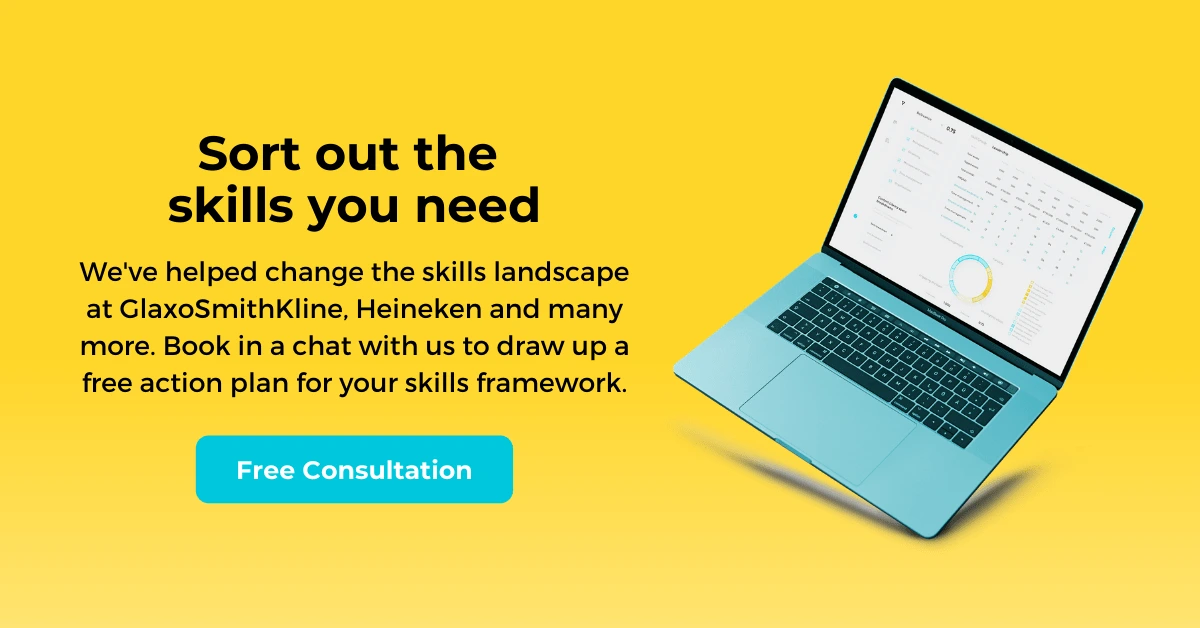The Skills Landscape in 2022: Upskilling
Our industry’s premier analyst, Josh Bersin, recently recorded a podcast dedicated exclusively to skills taxonomies. And the message is landing - 93% of businesses see reskilling and upskilling as the number one priority.
There’s a growing undercurrent of thinking that a skills-based employment setup is not just economically more efficient, but also more socially equitable. Skills such as data, digital, leadership and wellbeing are all becoming essential to the wider picture of organisational capability, learner engagement and lifelong learning.
However, despite all the noise around skills, there’s very little substance behind the discussion. And businesses are not even getting close to the reality of skills. But at Filtered, we work with skills all day every day, and we know what that reality looks like. We’ve condensed what we know into this piece, so read on to find out.
Intentional upskilling
The problem is that skills are, for the most part, unintentional. Making your skills intentional means going beyond a definition and fully articulating what your business means, by, say, resilience. The boiler-plate definition from the content provider is a start. But their definition of resilience is unlikely to be exactly what you intend for your workforce. Does it include getting a good night’s sleep? Should it? Does it include working well under pressure? Should it? Does it include time management? Once again, should it?

Such buy-in also helps break down skills silos. There’s a jumble of skills related to content in one system. Ditto job descriptions in another. Ditto learning objectives and KPIs. Ditto appraisals and performance management. The promise that skills can truly become that coveted ‘common currency’ all the way along the employee lifecycle is still a lofty aspiration rather than a hard reality.
A great deal of skill is required to change the clothes of an immobilized senior who might not want to have her clothes changed, or to wrangle a class of toddlers, or to clean up an overgrown yard at breakneck pace, or to handle five tables of drunk guys who want their wings yesterday. The kind of patience and equanimity it takes to be a good care worker? Not a skill, apparently. The kind of fortitude it takes to be a fruit picker? Not a skill either.

To deal with all of the challenges described above, we just need to:

Get the right data
We need to get the right data in order to design our skills framework well and align business partners and all stakeholders. Of course, not all the data we would like will be readily available. But in good, agile fashion we should start with what we have and iterate from there. Here are some good examples:

Top-down data sources
These data need to tell us what high profile initiatives are key for the company, what skills might support those, and what’s likely to change over time. They include:
- Business plans
- Corporate strategy documents
- Industry/sector whitepapers
- Interviews with leadership
Bottom-up data sources
We collate all relevant client or learner data that has a bearing on what’s valuable in their organisation. This includes:
- Usage data from their LMS/LXP
- Search data
- Surveys (often simple questions like: “what are three important capabilities to you?”; “what are three business project are important to you?”; “will they be the same in three years time”)
- Role definitions
- Existing capability frameworks for different roles
- Data from a range of HR sources and technologies (that Josh Bersin explains in detail in this podcast)
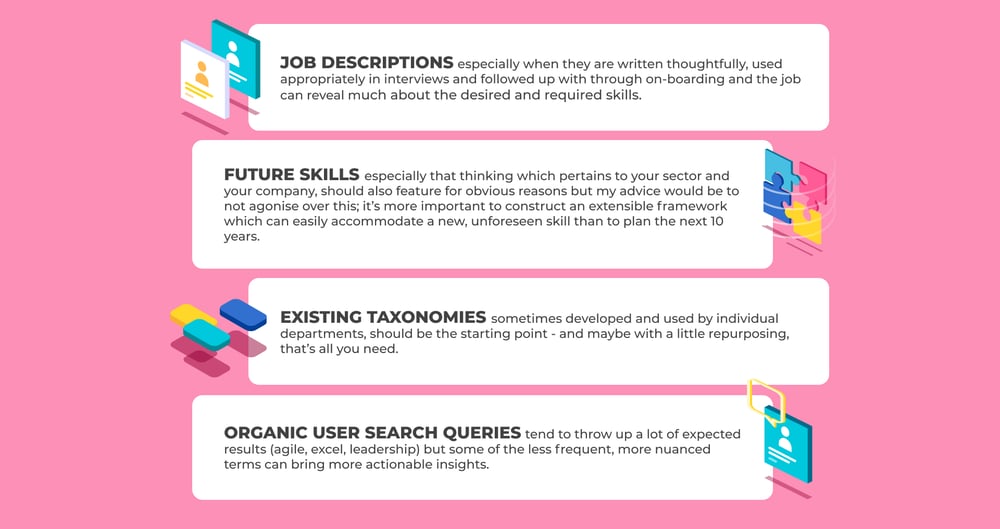
Each of these sources needs to be considered individually to make upskilling work For example, job descriptions, especially when they have written carefully (yes, often not the case - we do need to rethink this), used appropriately in interviews and followed up with throughout onboarding, can reveal much about the desired and required skills for the specific roles across your organisation. We use Content Intelligence to scan and draw out skills from these.
Use search data
Organic user search queries across talent and learning systems can also be informative, as first pointed out to me many years ago by Lori Niles-Hoffman. They will throw up a lot of expected results (agile, excel, leadership) which is useful to know and cater to while the less frequent, more nuanced terms can be even more revealing. Here’s a typical set of results for organic search on an LXP, SharePoint etc:
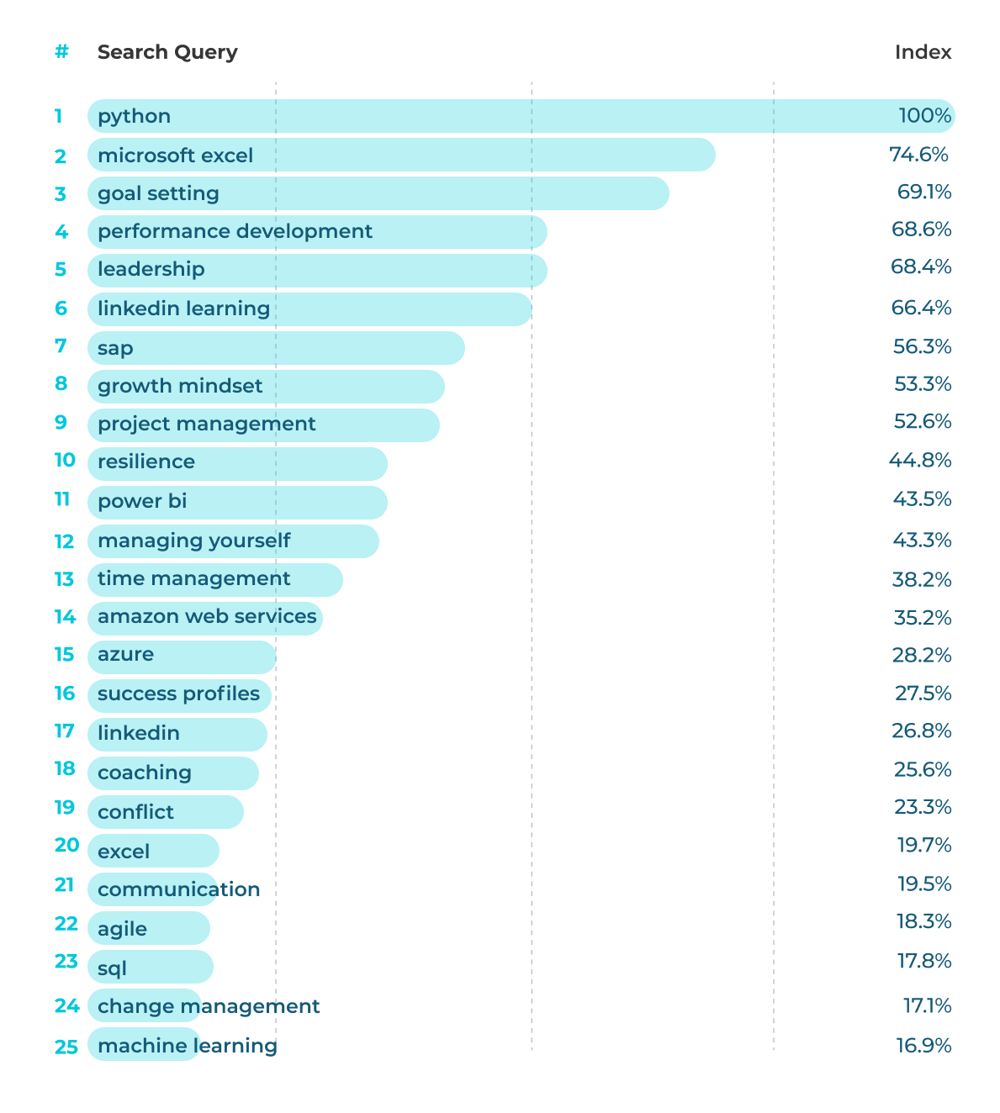
How useful is data like this for your reskilling or upskilling programme initiatives? On the one hand, this is real, unprompted user behaviour. On the other, it’s from a small and possibly unrepresentative sample of the workforce population and a lot of the terms are very generic (eg ‘leadership’). In short: it’s of some use for upskilling. So, we certainly need to combine it with other data. But here are some questions this kind of data might prompt:
- How do the search results for the most popular skills queries currently display for users? Does our best, most pertinent content come out on top, or is some of it buried? How can we fix it so that this experience - by definition seen by many users - is as good as possible?
- Which of these search queries should be built into our skills framework? Looking at the list above, it feels like most of them should be. And if users are commonly using these words and phrases, why not accommodate that explicitly in your skills framework - L&D needs to be and feel more relevant.
- Do some of these terms go together and indicate a strong interest in a theme? Could this be built into a pathway or a campaign? For example, growth mindset, resilience, managing yourself and time management have a personal productivity and wellbeing thread that runs through them. That might be a clue about how your workforce is feeling.
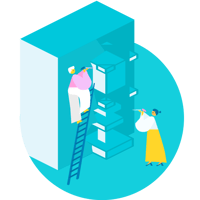
Your organisation will have data like this scattered across its systems. It just takes some creative thinking and technical wrangling to unlock. And once you have a dataset replete with skills indicators, you can move on to...
Design a skills framework
Synthesise all your data and draw it together into a relevant, robust, flexible and extensible skills framework. In our experience of helping businesses with their upskilling programmes, this tends to be 20-200 skills. The skills need to cover the business priorities today, at a minimum. They also need definitions, either accurate descriptions in natural language or skills graphs (see the curiosity pyramid below). They need to be believed in by business partners (and ideally you’ll have a champion per skill high up in the organisation). They may include some of levelling too.
These components allow your skills development to be intentional and focused and, most importantly, to contribute to business goals. That is the true purpose of L&D. That is how upskilling will be successful.
Choose and define each and every skill...intentionally
Choose and define each skill like you really mean it. Take curiosity, for example. There’s a lot of interest in this right now when it comes to upskilling as themes such as learning to learn, learning agility and purpose become more important to people. But what does curiosity mean in the language of your business? There’s no objective right or wrong. The only misstep you can make here is to not define the skill or behaviour at all. Here’s one interpretation of curiosity.
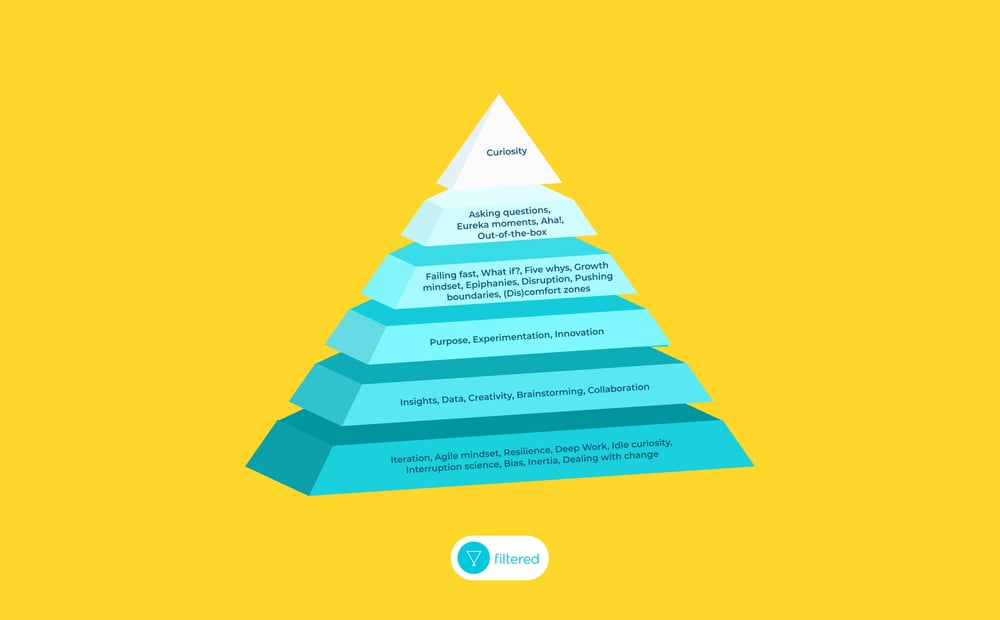
Here, the terms at the top are more specifically pertinent to the skill under consideration here, curiosity. So for this client, asking the right questions and out-of-the box thinking are very much what curiosity is about, and iteration, resilience, interruption science slightly less so. If you have developed and articulated this understanding of the skill, your curators, both human and machine, have the basis to curate intentionally.
Popular skills frameworks
My co-Founder, Vinit Patel, wrote about how to design a skills framework to be transformative. At the start of that article we shared some research into some of the most popular areas covered by such skills frameworks today:
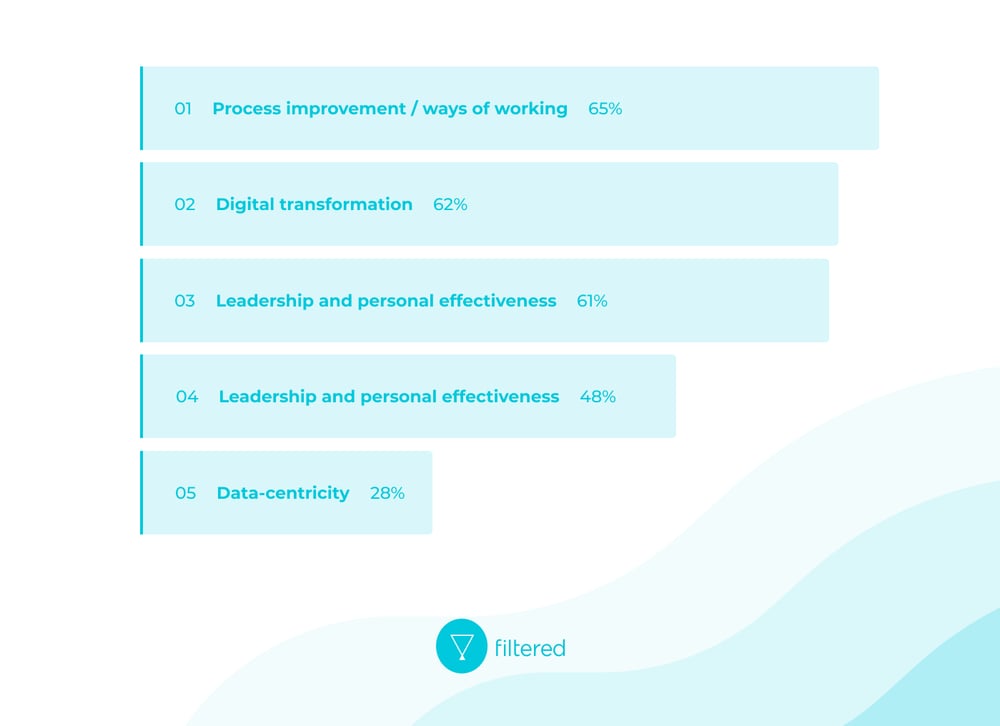
By a distance, the most popular type of skills framework amongst our clients is some version of digital skills, and these are perhaps the most efficient to define in this manner.
Finally, make sure to consider which skills will be important for the future of work in your organisation, especially in relation to your industry’s trends. But my advice would be to not agonise over this; it’s more important to construct an extensible framework which can easily accommodate new, unforeseen skills than to try to plan for the next 5-10 years' worth of upskilling/reskilling.
Filter and curate
You can now use those carefully-selected, high-value skills to determine both the learning content for reskilling that you buy for your company as well as the specific learning assets that you put in front of individuals. In this section, I’m going to show some of the outputs and UI of our product - Content Intelligence - to illustrate the approach and the art of the possible.
There are algorithms and artificial intelligence now which can take a nuanced understanding of your skills framework, including all of its levels and taxonomies, and apply that to thousands or millions of pieces of content and decide - as well as a human can - how relevant each is to building that skill. We call this Content Intelligence and one of the outputs looks like this:
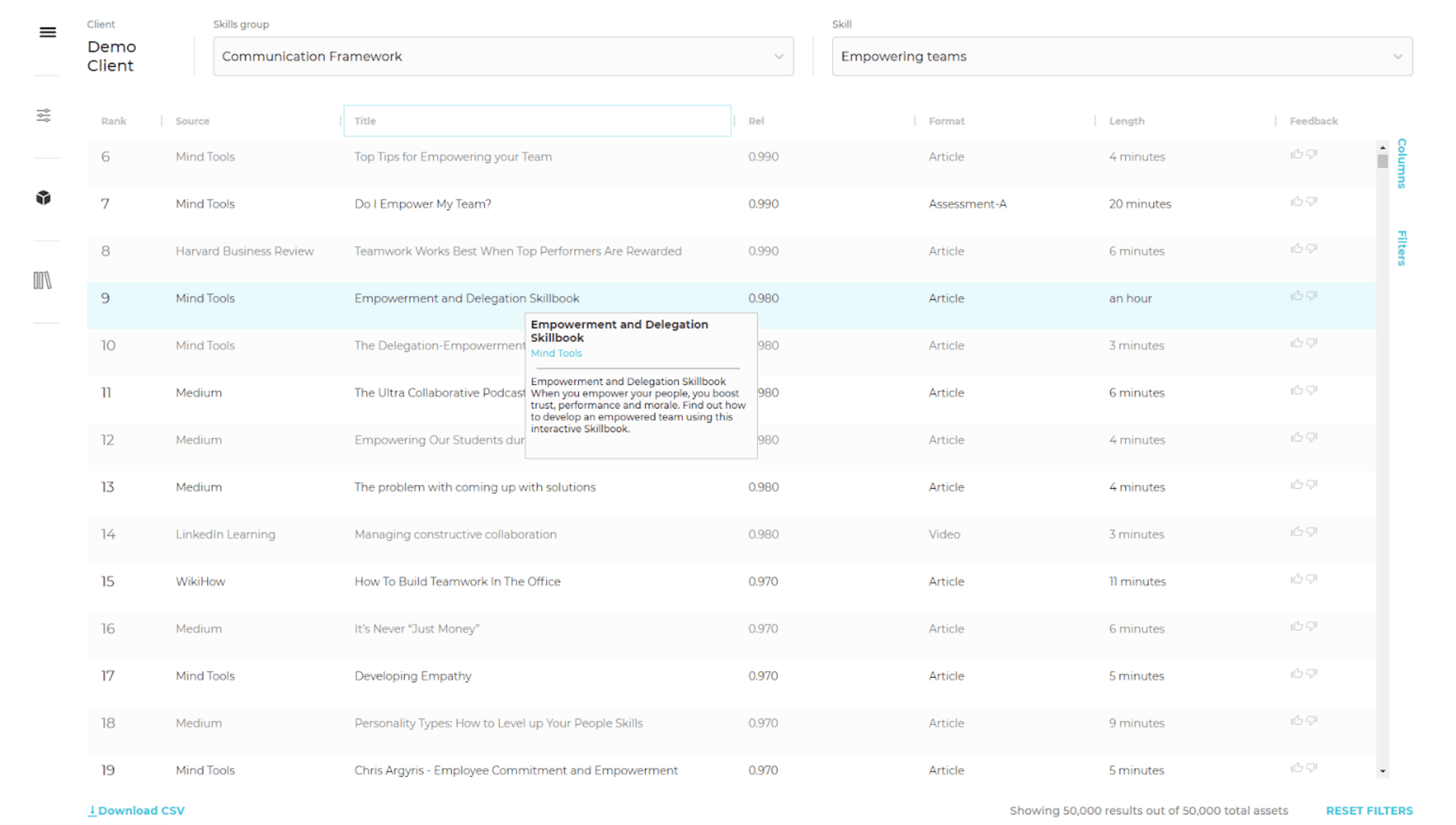
Viewing this asset-by-asset accelerates curation and informs how your platform recommends content to develop the skills your organisation cares about.
Assimilating this data at the level of the source of contentenables you to see exactly how well each of your library providers caters to the specific skills your organisation needs, as represented by your skills framework. That can be useful in a content procurement process to inform content buying decisions and negotiations. We frequently save large organisations over 30% on their content provider spend and/or better reallocate misused funds. The potential for bringing data to content buying decisions and RFPs is huge. Read a case study, written by Josh Bersin, about the work we did with AstraZeneca.
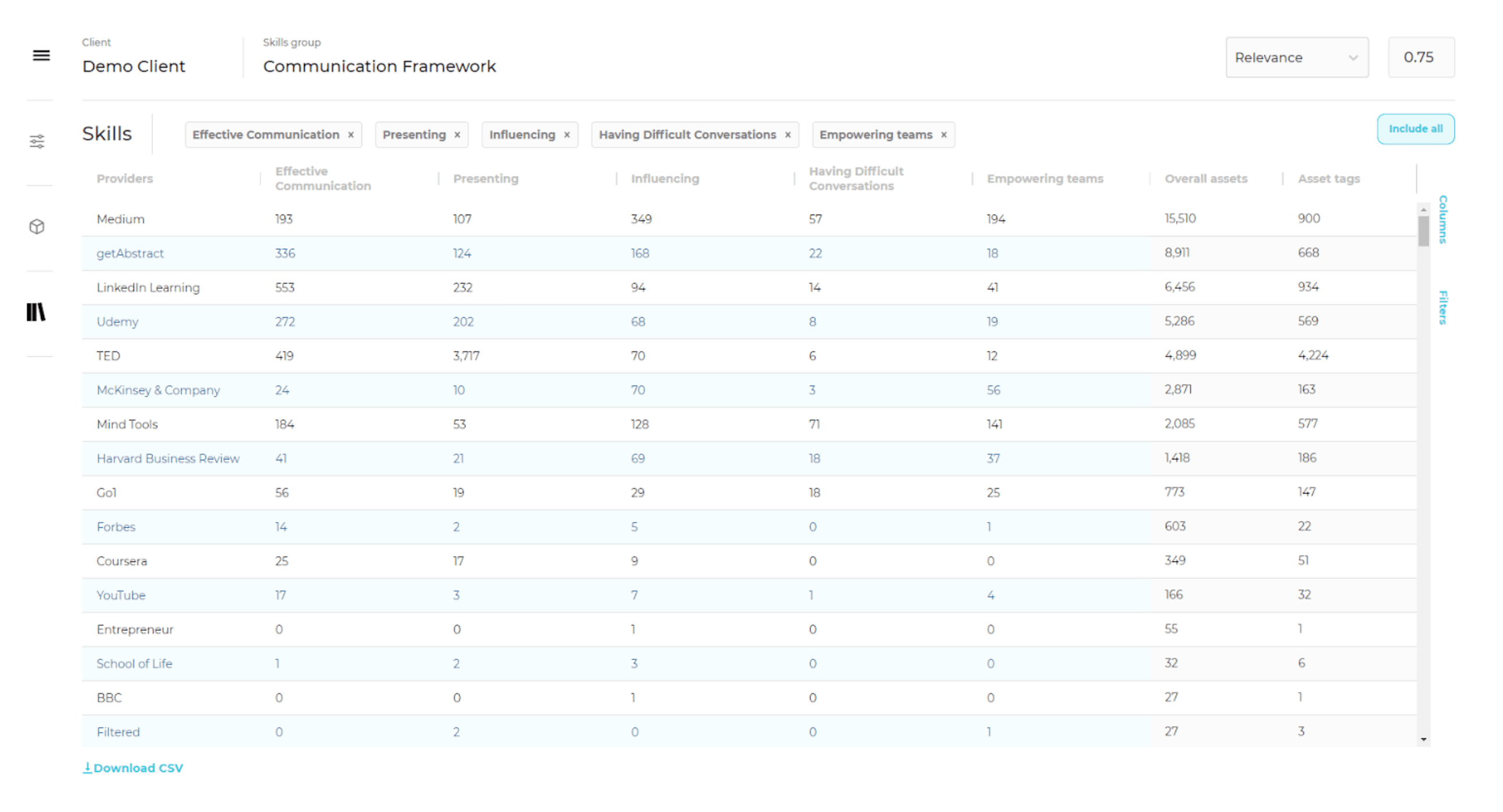
Learning content
To give a specific example of Content Intelligence in action - we ran our analysis on six of the major content libraries' learning assets to assess relevance to certain nuanced skills as well as overall quality. In this case, we looked at the power skill ‘leveraging data’ and assessed its relevance across the learning content that HBR, LinkedIn Learning, Coursera, getAbstract, Mind Tools and FutureLearn provide.
The analysis indicates that getAbstract, LinkedIn Learning and HBR have the most content about leveraging data and quantifies all of this.

You can see the full analysis here: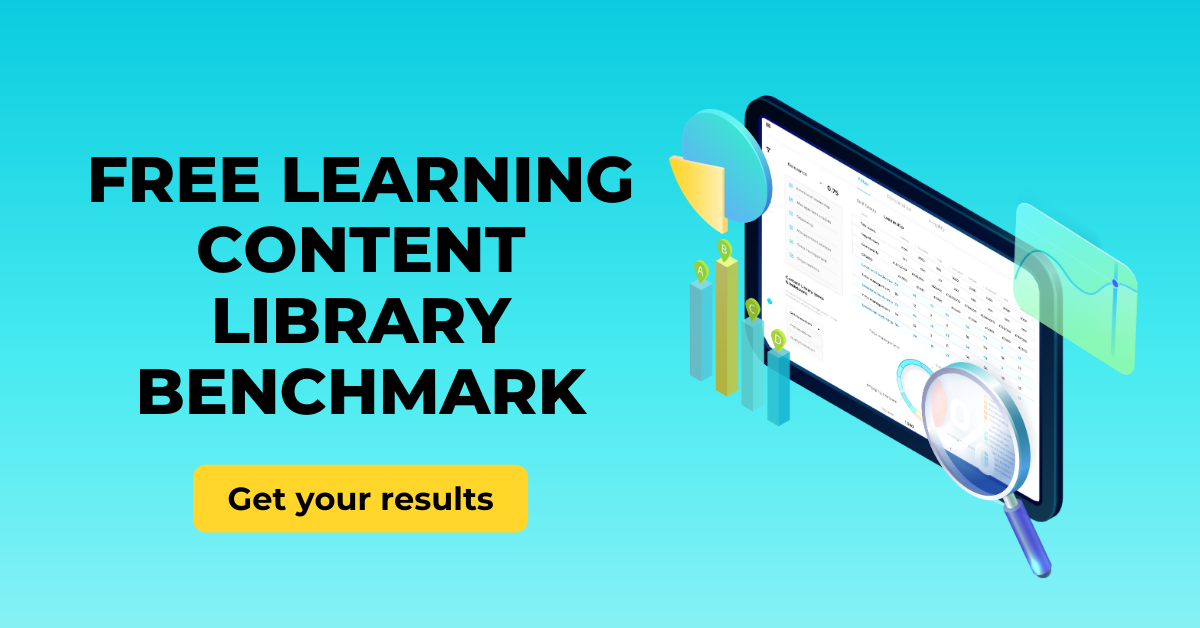
Of course, leveraging data is just one skill, and you wouldn’t make purchasing decisions based on one skill alone. The real power comes from scaling this approach across an entire skills framework ie all the skills you have painstakingly worked out as being of high priority for your organisation. When you have your definitive (but extensible!) list of skills, , you can make truly informed decisions on what content is working to build the skills and capabilities your team needs, now and for some years to come.
Skills are used beyond learning
The skills you’ve put together are useful elsewhere too. The right (data-backed, and carefully synthesised), high-definition picture of skills does of course help with learning and development decisions and activities. It’s also interesting to those working in Talent, the C-Suite, PR - and really any hiring manager in the entire business. Because there’s a popular and growing opinion that skills is the best lens through which to think about workplace productivity and the full employee lifecycle.
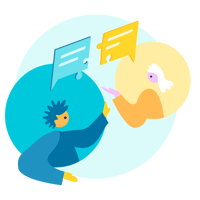 A huge number of organisations are stuck on the upskilling journey. They know that upskilling is a priority but they don’t know how to get started, or their current efforts have fallen flat. Solving skills isn’t easy, but as I’ve outlined above, it is important and there are some sensible data to draw on and steps to take. It’s something that we spend our days delivering for our forward-thinking clients. There are so many benefits to uncovering data, building a coherent skills framework and delivering content to build the skills of your people. If you want help unlocking those benefits, we can help with any stage of the process, please be in touch.
A huge number of organisations are stuck on the upskilling journey. They know that upskilling is a priority but they don’t know how to get started, or their current efforts have fallen flat. Solving skills isn’t easy, but as I’ve outlined above, it is important and there are some sensible data to draw on and steps to take. It’s something that we spend our days delivering for our forward-thinking clients. There are so many benefits to uncovering data, building a coherent skills framework and delivering content to build the skills of your people. If you want help unlocking those benefits, we can help with any stage of the process, please be in touch.
 Marc Zao-Sanders, CEO
Marc Zao-Sanders, CEO


